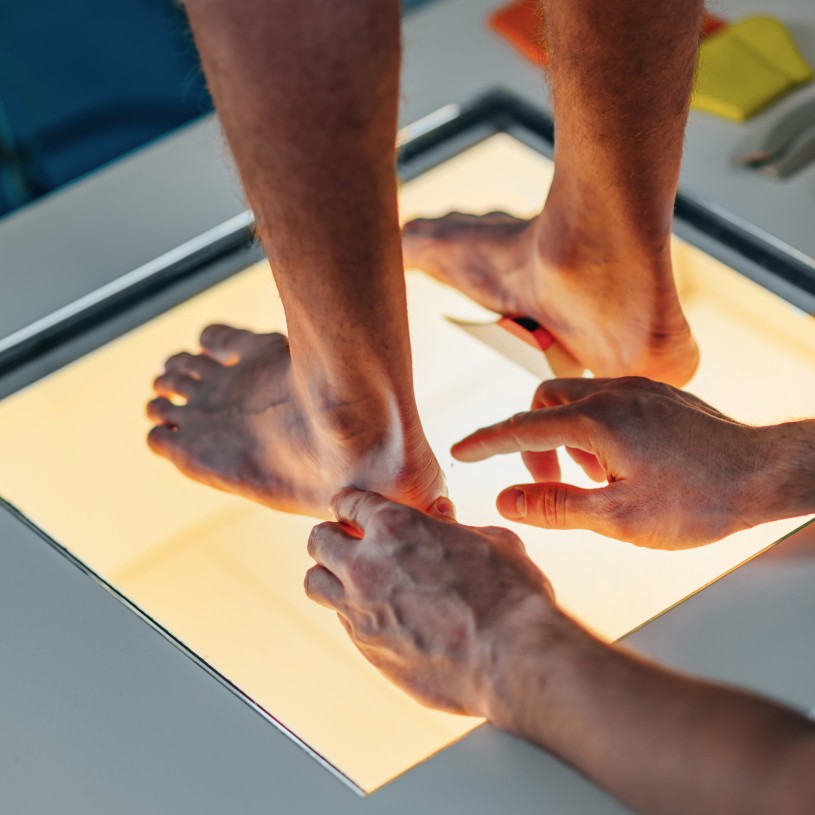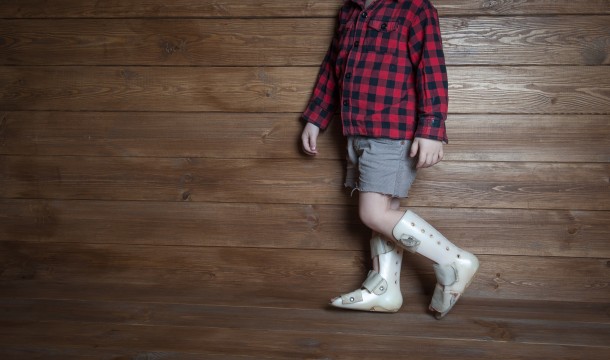How to Deal With Clubfoot Challenges?

Did you know that every 1-2 newborns in every 1000 are affected by Clubfoot, also known as talipes foot equinovarus? This is a congenital condition that affects thousands worldwide. The impact extends to those diagnosed and their families, as the journey to overcoming clubfoot challenges can be physically and emotionally demanding.
This blog will talk about clubfoot, club foot treatment, club foot management, and much more!
What Is Club Foot?
Club foot is characterised by a twisted foot and ankle, pointing downward and inward, making walking challenging for individuals. We're unsure what causes it, but genes and the environment might be involved. Finding and diagnosing it early is essential to take action in time. By understanding the basics of club foot, we pave the way for informed decisions and compassionate support for those affected.
How to Deal With ClubFoot Challenges Effectively?
For moms, dads, and those taking care of babies with clubfoot, it's important to know the signs early on.
Early Diagnosis: Finding the issue sooner helps get the right help and improves the treatment.
Emotional Support: Dealing with the feelings involved in treating clubfoot needs a careful mix of giving help and letting the little one do things independently.
Social Circle: Creating a helpful group of people around you is important.
Consult others: Talking to other parents who went through similar situations, getting advice from doctors, and keeping up with the latest improvements in treating clubfoot can make you feel more confident and knowledgeable as a caregiver.
What Is the Treatment for Club Foot?
Club foot treatment follows a multi-faceted approach:
Non-surgical interventions: These often form the initial phase of treatment. Techniques such as casting, stretching exercises, and physical therapy aim to reposition the foot gradually. Early and consistent application of these methods can yield positive outcomes.
Surgery: If non-surgical treatments don't work well enough, doctors might suggest surgery. In clubfoot surgeries, the goal is to loosen tight tendons and move bones to improve natural movement. Although surgeries always have risks, improvements in medical technology have significantly lowered the chances of complications.
Early intervention: Early intervention is paramount in club foot treatment. The sooner the condition is addressed, the greater the likelihood of successful outcomes. This emphasises the importance of regular check-ups and infant screenings, allowing healthcare professionals to identify and initiate treatment promptly.
As we feel happy about the progress in treating clubfoot, we also think about the future with hope. Continuing studies give the possibility of more focused and improved treatments. Discoveries in understanding genes, regenerative medicine, and personalised treatment plans give hope for a better future for people with club feet.
Innovative Approaches to Club Foot Treatment
In the ever-evolving landscape of medical technology, innovative approaches to club foot treatment are emerging. Customised orthotics, created through 3D printing, provide a tailored solution for individuals, ensuring a comfortable fit that supports their unique foot structure.
These new and advanced technologies make treatments better and help people with clubfoot feel more positive and empowered during their treatment. As we explore these new ideas, it's clear that the future holds even better possibilities for those dealing with clubfoot.

Why Is Support and Awareness Important for Clubfoot?
Overcoming club foot challenges is more than just medical help; it needs a strong support system. Groups and communities for people with club feet are important for giving emotional support, sharing experiences, and helpful advice. These communities are like a lifeline for parents, caregivers, and those dealing with club foot directly.
Making people aware is also crucial. We help create a society that includes and understands by clearing up misunderstandings about club foot. Doctors, teachers, and everyone in the public all have important roles in making an environment that welcomes differences and helps people with clubfoot live without limits.
Breaking Stereotypes and Inspiring Hope
Club foot management does not define individuals, and success stories are a testament to the resilience of the human spirit. By highlighting achievements and triumphs over club foot challenges, we challenge stereotypes and shift the narrative from limitation to possibility.
Cheering for these success stories is not just about showing off personal achievements. It's about changing how society thinks. It's about creating a culture that looks past physical differences and sees the abilities in each person, no matter their medical past.
By keeping ourselves updated and supporting ongoing research, we play a part in a group effort to improve treatment options and improve the lives of those with club feet. The process doesn't stop after successful treatment; it builds a world where clubfoot isn't a hindrance but a challenge that can be efficiently dealt with.

Wrapping Up
As we finish discussing the difficulties and successes of dealing with clubfoot, let's think about the toughness, power, and strong will shown by people who have experienced this condition. The path from finding out about it to getting treatment and finally living a life without restrictions is filled with motivating stories, creative solutions, and the constant backing of communities.
Fixing a club foot shows how medicine improves, people stay strong, and society learns. It's like a trip turning problems into chances and limits into options. As we break down barriers, challenge stereotypes, and raise awareness, we move closer to a world where club foot management is not a hindrance but a chapter in a story of triumph and resilience.
If you or someone you know has clubfoot, visit a tertiary-care hospital for expert diagnosis and treatment!
FAQs
1. Can clubfoot be corrected without surgery?
Yes, most cases of clubfoot can be corrected without surgery using the Ponseti method, which involves a series of casts to realign the foot and the use of braces to maintain the correction.
2. At what age should treatment for clubfoot begin?
Treatment for clubfoot should ideally begin shortly after birth, usually within the first week or two of life, to achieve the best outcomes.
3. Is clubfoot painful for babies?
Clubfoot itself is not painful for babies, but untreated clubfoot can lead to discomfort and mobility issues as the child grows. Early treatment prevents these complications.
4. How long does the Ponseti method take to correct clubfoot?
The casting phase of the Ponseti method typically takes 6-8 weeks, followed by bracing for several years to maintain the correction as the child grows.
5. Can a child with clubfoot walk normally later in life?
Yes, with timely and proper treatment, most children with clubfoot can walk, run, and lead active lives without significant limitations.
Citations
Alsiddiky, A., Alrwibaah, S., Alqahtani, A., Alnujidi, A., Alhomaidhi, A., Almasoud, A., & Alatassi, R. (2019). Assessing public awareness of clubfoot and knowledge about the importance of early childhood treatment: a cross-sectional survey. BMC Pediatrics, 19(1). https://doi.org/10.1186/s12887-019-1740-z
Ansar, A., Rahman, A. E., Romero, L., Haider, M. R., Rahman, M. M., Moinuddin, M., Siddique, M. a. B., Mamun, M. A., Mazumder, T., Pirani, S. P., Mathias, R. G., Arifeen, S. E., & Hoque, D. M. E. (2018). Systematic review and meta-analysis of global birth prevalence of clubfoot: a study protocol. BMJ Open, 8(3), e019246. https://doi.org/10.1136/bmjopen-2017-019246
Dobbs, M. B., & Gurnett, C. A. (2009). Update on Clubfoot: Etiology and treatment. Clinical Orthopaedics and Related Research, 467(5), 1146–1153. https://doi.org/10.1007/s11999-009-0734-9
Dobbs, M. B., & Gurnett, C. A. (2011). Genetics of clubfoot. Journal of Pediatric Orthopaedics B, 21(1), 7–9. https://doi.org/10.1097/bpb.0b013e328349927c
Dobbs, M. B., & Gurnett, C. A. (2017). The 2017 ABJS Nicolas Andry Award: Advancing Personalized Medicine for Clubfoot Through Translational Research. Clinical Orthopaedics and Related Research, 475(6), 1716–1725. https://doi.org/10.1007/s11999-017-5290-0
Dobbs, M. B., Morcuende, J. A., Gurnett, C. A., & Ponseti, I. V. (2000). Treatment of Idiopathic Clubfoot: An Historical review. https://pmc.ncbi.nlm.nih.gov/articles/PMC1888755/


